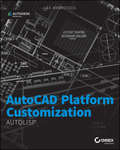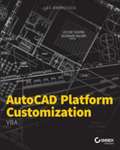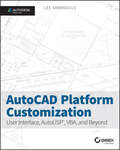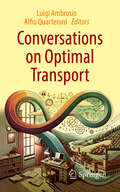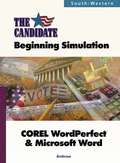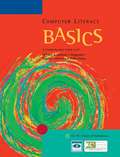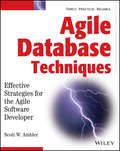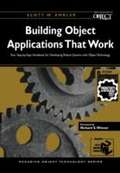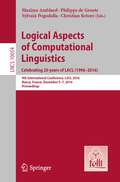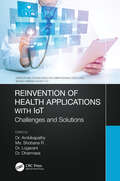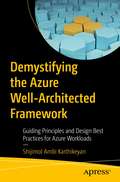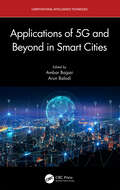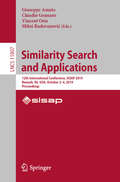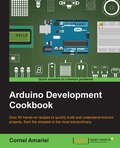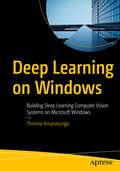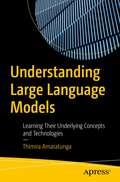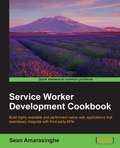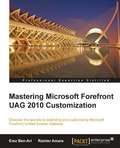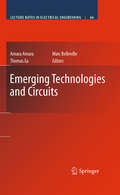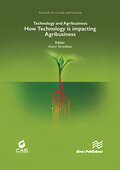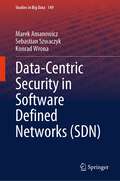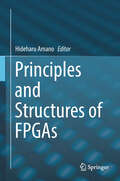- Table View
- List View
AutoCAD® Platform Customization
by Lee AmbrosiusMake AutoCAD your own with powerful personalization options Options for AutoCAD customization are typically the domain of administrators, but savvy users can perform their own customizations to personalize AutoCAD. Until recently, most users never thought to customize the AutoCAD platform to meet their specific needs, instead leaving it to administrators. If you are an AutoCAD user who wants to ramp up personalization options in your favorite software, AutoCAD Platform Customization: User Interface and Beyond is the perfect resource for you. Author Lee Ambrosius is recognized as a leader in AutoCAD platform customization and can help you get the most out of AutoCAD. Establish and manage CAD standards for the drawings you create Control the startup process and settings that define the drawing environment Modify the user interface to display the commands you use most frequently and create new commands Create macros to speed up frequently repeated tasks Define custom shapes, linetypes, and hatch patters to control the linework in a drawing Use real-world tips and tutorials to reinforce the author's topical discussions A perfect resource for CAD administrators, students, senior drafters, and other CAD enthusiasts, AutoCAD Platform Customization: User Interface and Beyond features in-depth discussions of customization options as well as detailed examples and tutorials. As an eight-year customization and programming session leader with Autodesk University, Lee Ambrosius is uniquely qualified to help users get the most out of software based on the AutoCAD platform. His AutoCAD Platform Customization: User Interface and Beyond is the go-to resource for those who are ready to take their software customization to the next level.
AutoCAD® Platform Customization
by Lee AmbrosiusMake AutoCAD your own with powerful personalization options Options for AutoCAD customization are typically the domain of administrators, but savvy users can perform their own customizations to personalize AutoCAD. Until recently, most users never thought to customize the AutoCAD platform to meet their specific needs, instead leaving it to administrators. If you are an AutoCAD user who wants to ramp up personalization options in your favorite software, AutoCAD Platform Customization: User Interface and Beyond is the perfect resource for you. Author Lee Ambrosius is recognized as a leader in AutoCAD platform customization and can help you get the most out of AutoCAD. Establish and manage CAD standards for the drawings you create Control the startup process and settings that define the drawing environment Modify the user interface to display the commands you use most frequently and create new commands Create macros to speed up frequently repeated tasks Define custom shapes, linetypes, and hatch patters to control the linework in a drawing Use real-world tips and tutorials to reinforce the author's topical discussions A perfect resource for CAD administrators, students, senior drafters, and other CAD enthusiasts, AutoCAD Platform Customization: User Interface and Beyond features in-depth discussions of customization options as well as detailed examples and tutorials. As an eight-year customization and programming session leader with Autodesk University, Lee Ambrosius is uniquely qualified to help users get the most out of software based on the AutoCAD platform. His AutoCAD Platform Customization: User Interface and Beyond is the go-to resource for those who are ready to take their software customization to the next level.
AutoCAD Platform Customization: User Interface, AutoLISP, VBA, and Beyond
by Lee AmbrosiusTake control of AutoCAD for a more efficient, streamlined workflow AutoCAD Platform Customization is the most comprehensive guide to streamlining and personalizing the AutoCAD platform. The AutoLISP and VBA programming languages open up a myriad of customization options, and this book provides expert guidance toward applying them to AutoCAD, Civil 3D, Plant 3D, and other programs based on the Autodesk AutoCAD platform. Detailed discussions backed by real-world examples and step-by-step tutorials provide user-friendly instruction, and downloadable datasets allow for hands-on learning. Through customization you can increase screen real estate, streamline workflows, and create more accurate drawings by unleashing powerful programming languages that allow the user to command the software how to work, instead of the other way around. AutoCAD customization is commonly performed by system administrators and CAD managers, but senior drafters and savvy users are increasingly taking customization into their own hands. AutoLISP and VBA are two popular and versatile tools that allow for going beyond the boundaries of normal user interface customization options, allowing users to: Enforce drawing and CAD standards, and automate repetitive tasks Customize the workspace, including tool sets, ribbon tabs and panels, and palettes Modify graphical objects, set system variables, integrate with external software, and more Manage blocks, change the interface, create dialog boxes, and communicate with Microsoft Office applications The ideal design environment puts the tools you need right at your fingertips, removes unnecessary steps, and fosters precision through good communication. Customizing, including applying AutoLISP and VBA to AutoCAD, enables all of this and much more. For the designer who needs to work smarter because it's impossible to work any harder, AutoCAD Platform Customization provides the key information, insight, and techniques that will help to increase your productivity with AutoCAD.
Conversations on Optimal Transport
by Luigi Ambrosio Alfio QuarteroniThis work is closely tied to the renowned mathematics textbook series known as UNITEXT, tailored for university students pursuing bachelor’s or master’s degrees. What sets this particular book apart in the Springer collection is its unique origin: it has been crafted through a meticulous process involving interviews handled with and by world-class mathematicians. The content featured in this book revolve around a highly relevant and engaging topic: Optimal Transport. These conversations involve not only authors from the UNITEXT series, but also members of the series’ Editorial Board. Additionally, they feature prominent figures in the field, including a Field Medalist. This work provides readers with a snapshot of remarkable vitality and freshness, guaranteed to captivate and engage anyone with an interest in mathematics. It’s important to note that these interviews were initially shared as podcasts and originally broadcasted as online events on the Cassyni platform. Subsequently, advanced AI tools were employed under human supervision to transcribe the audios and edit them for better readability. A human copy-editor was involved during the whole process, and the authors revised the final copy-edited texts before publication. The content in each format – the interviews, the PODCASTS and the book – is self-contained and not a mere adaptation from one medium to another. Instead, it represents an independent exploration of the subject matter.
The Candidate: Beginning Simulation for COREL WordPerfect and Microsoft Word
by Ann P. AmbroseThe Candidate is a beginning word processing simulation that is designed to develop word processing skills while completing tasks such as formatting letters, memorandums, tables, press releases, and reports.
Computer Literacy Basics: A Comprehensive Guide to IC3
by Ann Ambrose Marly Bergerud Donald Busche Connie Morrison Dolores Wells-PusinsComputer Literacy BASICS provides an introduction to computer technology and concepts. This text maps to the IC3 standards and is organized into three key components: Computing Fundamentals, Key Applications, and Living Online. It provides thorough instruction on the various uses of the computer, important accessories, networking principles and covers key applications such as word processing, spreadsheets, and presentation applications. In addition, Computer Literacy BASICS covers e-mail and Internet principles such as managing e-mail and contacts, searching for a topic online, and how computers affect every day life. Strong end-of-chapter exercises and review material reinforce important topics covered in the lesson and allow students to demonstrate their knowledge of the material.
Agile Database Techniques
by Scott W. AmblerDescribes Agile Modeling Driven Design (AMDD) and Test-Driven Design (TDD) approaches, database refactoring, database encapsulation strategies, and tools that support evolutionary techniques Agile software developers often use object and relational database (RDB) technology together and as a result must overcome the impedance mismatch The author covers techniques for mapping objects to RDBs and for implementing concurrency control, referential integrity, shared business logic, security access control, reports, and XML An agile foundation describes fundamental skills that all agile software developers require, particularly Agile DBAs Includes object modeling, UML data modeling, data normalization, class normalization, and how to deal with legacy databases Scott W. Ambler is author of Agile Modeling (0471202827), a contributing editor with Software Development (www. sdmagazine. com), and a featured speaker at software conferences worldwide
Building Object Applications That Work: Your Step-by-Step Handbook for Developing Robust Systems with Object Technology
by Scott W. AmblerA must-have resource for designers and testers of today's OO applications, the book takes you thru the entire process of building object applications.
The Elements of UMLTM 2.0 Style
by Scott W. AmblerFor all developers who create models using the Unified Modeling Language (UML) 2.x The Elements of UML(TM) 2.0 Style sets the rules for style that will improve your productivity - especially in teams, where understandability and consistency are critical. Coming from renowned UML expert Scott Ambler, the book furnishes a set of rules for modelling in the UML and describes a collection of standards and guidelines for creating effective UML diagrams that will be concise and easy to understand. It provides conventions for: Class diagrams; Timing Diagrams; Use case diagrams; Composite Structure Diagrams; Sequence diagrams; Interaction Overview Diagrams; Activity diagrams; Object diagrams; State machine diagrams; Package diagrams; Communication diagrams; Deployment diagrams and Component diagrams. The Elements of UML(TM) 2.0 Style sets the rules for style that will improve your productivity.
The Object Primer
by Scott W. AmblerScott Ambler, award-winning author of Building Object Applications that Work, Process Patterns, and More Process Patterns, has revised his acclaimed first book, The Object Primer. Long prized in its original edition by both students and professionals as the best introduction to object-oriented technology, this book is now completely up-to-date, with all modeling notation rewritten in the just-released UML 2. 0. All chapters have been revised to take advantage of Agile Modeling (AM), which is presented in the new chapter 2 along with other important new modeling techniques. Review questions at the end of each chapter allow readers to test their newly acquired knowledge. In addition, the author takes time to reflect on the lessons learned over the past few years by discussing the proven benefits and drawbacks of the technology. This is the perfect book for any software development professional or student seeking an introduction to the concepts and terminology of object technology.
Logical Aspects of Computational Linguistics. Celebrating 20 Years of LACL (1996–2016)
by Maxime Amblard Philippe Groote Sylvain Pogodalla Christian RetoréEdited under the auspices of the Association of Logic, Language and Information (FoLLI), this book constitutes the refereed proceedings of the 20th anniversary of the International Conference on Logical Aspects of Computational Linguistics, LACL 2016, held in LORIA Nancy, France, in December 2016. The 19 contributed papers, presented together with 4 invited papers and 6 abstracts, were carefully reviewed and selected from 38 submissions. The focus of the conference is the use of type theoretic, proof theoretic, and model theoretic methods for describing and formalising natural language syntax, semantics, and pragmatics as well as the implementation of the corresponding tools.
Logical Aspects of Computational Linguistics. Celebrating 20 Years of LACL: 9th International Conference, LACL 2016, Nancy, France, December 5-7, 2016, Proceedings (Lecture Notes in Computer Science #10054)
by Maxime Amblard Philippe De Groote Sylvain Pogodalla Christian RetoréEdited under the auspices of the Association of Logic, Language andInformation (FoLLI), this book constitutes the refereed proceedings ofthe 20th anniversary of the International Conference on LogicalAspects of Computational Linguistics, LACL 2016, held in LORIA Nancy,France, in December 2016. The 19 contributed papers, presentedtogether with 4 invited papers and 6 abstracts, were carefullyreviewed and selected from 38 submissions. The focus of the conferenceis the use of type theoretic, proof theoretic, and model theoreticmethods for describing and formalising natural language syntax,semantics, and pragmatics as well as the implementation of thecorresponding tools.
Reinvention of Health Applications with IoT: Challenges and Solutions (Demystifying Technologies for Computational Excellence)
by Dr A. AmbikapathyThis book discusses IoT in healthcare and how it enables interoperability, machine-to-machine communication, information exchange, and data movement. It also covers how healthcare service delivery automates patient care with the help of mobility solutions, new technologies, and next-gen healthcare facilities with challenges faced and suggested solutions prescribed. Reinvention of Health Applications with IoT: Challenges and Solutions presents the latest applications of IoT in healthcare along with challenges and solutions. It looks at a comparison of advanced technologies such as Deep Learning, Machine Learning, and AI and explores the ways they can be applied to sensed data to improve prediction and decision-making in smart health services. It focuses on society 5.0 technologies and illustrates how they can improve society and the transformation of IoT in healthcare facilities to support patient independence. Case studies are included for applications such as smart eyewear, smart jackets, and smart beds. The book will also go into detail on wearable technologies and how they can communicate patient information to doctors in medical emergencies. The target audiences for this edited volume is researchers, practitioners, students, as well as key stakeholders involved in and working on healthcare engineering solutions.
Demystifying the Azure Well-Architected Framework: Guiding Principles and Design Best Practices for Azure Workloads
by Shijimol Ambi KarthikeyanUse the Azure well-architected framework to deploy your workloads in Azure and align them with Microsoft recommended best practices. This book takes a deep dive into the five architecture elements (cost optimization, performance efficiency, operational excellence, reliability, and security) and provides practical guidance on incorporating them into your architecture.The book starts with an introduction to the relevance of the well-architectured framework and why it should form the baseline of your design decisions when deploying applications in Azure. You will learn how customers can optimize the cost of deployment in Azure and understand all aspects of implementation. The book takes you through the practices and processes to be followed to run applications smoothly and you will understand the end-to-end process of design, deployment, and monitoring. You will go through paradigms for designing environments to meet different performance demands. The book covers how to build resilient and highly available applications in Azure with a sample configuration for monitoring. And you will learn how to enable security to ensure confidentiality and integrity of workloads in Azure.After reading this book, you will know the practical nuances of designing high-performing applications in the Microsoft cloud. What You Will LearnUnderstand the five pillars of the well-architected frameworkUse tools and services to optimize costDesign for performance efficiencyDeal with threat vectors in the cloudWho This Book Is ForSolution architects and cloud teams in Azure
Applications of 5G and Beyond in Smart Cities (Computational Intelligence Techniques)
by Ambar Bajpai and Arun BalodiThis book explores the potential of 5G technologies and beyond in smart city setups, with the availability of high bandwidths and performance, and low latency. The book starts with an introduction to 5G, along with the challenges, limitations, and research areas in future wireless communication, including the related requirements for transformation of societal paradigms and infrastructure. Applications related to visible light communication, network management in smart cities, the role of 5G in public healthcare, safety, security, and transportation, and existing and planned 6G research frameworks are included. The features of the book include: A broad perspective on 5G communications with a focus on smart cities. Discussion of artificial intelligence in future wireless communication and its applications. A systemic and comprehensive coverage of 6G technologies, challenges, and uses. The role of future wireless communications in safety, health, and transport in smart cities. Case studies of future wireless communication. This book is aimed at researchers and professionals in communications, signal processing, cyber-physical systems, and smart cities.
Similarity Search and Applications: 12th International Conference, SISAP 2019, Newark, NJ, USA, October 2–4, 2019, Proceedings (Lecture Notes in Computer Science #11807)
by Giuseppe Amato Claudio Gennaro Vincent Oria Miloš RadovanovićThis book constitutes the refereed proceedings of the 12th International Conference on Similarity Search and Applications, SISAP 2019, held in Newark, NJ, USA, in October 2019. The 12 full papers presented together with 18 short and 3 doctoral symposium papers were carefully reviewed and selected from 42 submissions. The papers are organized in topical sections named: Similarity Search and Retrieval; The Curse of Dimensionality; Clustering and Outlier Detection; Subspaces and Embeddings; Applications; Doctoral Symposium Papers.
Arduino Development Cookbook
by Cornel AmarieiIf you want to build programming and electronics projects that interact with the environment, this book will offer you dozens of recipes to guide you through all the major applications of the Arduino platform. It is intended for programming or electronics enthusiasts who want to combine the best of both worlds to build interactive projects.
Deep Learning on Windows: Building Deep Learning Computer Vision Systems on Microsoft Windows
by Thimira AmaratungaBuild deep learning and computer vision systems using Python, TensorFlow, Keras, OpenCV, and more, right within the familiar environment of Microsoft Windows. The book starts with an introduction to tools for deep learning and computer vision tasks followed by instructions to install, configure, and troubleshoot them. Here, you will learn how Python can help you build deep learning models on Windows. Moving forward, you will build a deep learning model and understand the internal-workings of a convolutional neural network on Windows. Further, you will go through different ways to visualize the internal-workings of deep learning models along with an understanding of transfer learning where you will learn how to build model architecture and use data augmentations. Next, you will manage and train deep learning models on Windows before deploying your application as a web application. You’ll also do some simple image processing and work with computer vision options that will help you build various applications with deep learning. Finally, you will use generative adversarial networks along with reinforcement learning. After reading Deep Learning on Windows, you will be able to design deep learning models and web applications on the Windows operating system. What You Will LearnUnderstand the basics of Deep Learning and its historyGet Deep Learning tools working on Microsoft WindowsUnderstand the internal-workings of Deep Learning models by using model visualization techniques, such as the built-in plot_model function of Keras and third-party visualization toolsUnderstand Transfer Learning and how to utilize it to tackle small datasetsBuild robust training scripts to handle long-running training jobsConvert your Deep Learning model into a web applicationGenerate handwritten digits and human faces with DCGAN (Deep Convolutional Generative Adversarial Network)Understand the basics of Reinforcement Learning Who This Book Is For AI developers and enthusiasts wanting to work on the Windows platform.
Understanding Large Language Models: Learning Their Underlying Concepts and Technologies
by Thimira AmaratungaThis book will teach you the underlying concepts of large language models (LLMs), as well as the technologies associated with them. The book starts with an introduction to the rise of conversational AIs such as ChatGPT, and how they are related to the broader spectrum of large language models. From there, you will learn about natural language processing (NLP), its core concepts, and how it has led to the rise of LLMs. Next, you will gain insight into transformers and how their characteristics, such as self-attention, enhance the capabilities of language modeling, along with the unique capabilities of LLMs. The book concludes with an exploration of the architectures of various LLMs and the opportunities presented by their ever-increasing capabilities—as well as the dangers of their misuse. After completing this book, you will have a thorough understanding of LLMs and will be ready to take your first steps in implementing them into your own projects. What You Will Learn Grasp the underlying concepts of LLMsGain insight into how the concepts and approaches of NLP have evolved over the yearsUnderstand transformer models and attention mechanismsExplore different types of LLMs and their applicationsUnderstand the architectures of popular LLMsDelve into misconceptions and concerns about LLMs, as well as how to best utilize them Who This Book Is For Anyone interested in learning the foundational concepts of NLP, LLMs, and recent advancements of deep learning
Service Worker Development Cookbook
by Sean AmarasingheBuild highly available and performant native web applications that seamlessly integrate with third-party APIs About This Book * Get straight into the action with step-by-step recipes that show you how to put Service Workers to work * Find out what Service Workers can do for your app, then do it! * Get the first in-depth look at this important new feature for web developers Who This Book Is For Web developers, mobile application developers, and software engineers with any level of knowledge can use this book. You should be familiar with JavaScript and HTML. What You Will Learn * Display a custom offline page * Cache critical resources for offline use * Implement offline Google Analytics * Get network responses offline * Implement push notifications * Improve performance of your app In Detail It would be nice to have web apps that work offline and send push notifications. This is now possible with Service Workers, which can add native-like functionality to your web apps without requiring a download. This book will get your mobile and web apps functioning without Internet connectivity, improve performance and network interaction in order to increase the level of availability, and show you how to build performant applications that seamlessly integrate with third-party APIs. We'll show you how to add Service Worker functionality to web apps and sites, access offline content through basic and advanced techniques, and build powerful interactive system notifications. We'll also teach you about cache functionality and assets to provide immediate load even over narrow connections. We conclude by giving you various tips to improve app performance, including the background sync technique. By the end of this book, you'll know build high performing and faster web and mobile applications with Service Workers. Style and approach This book provides lots of task-oriented, practical, and inspiring ways to put Service Workers to work. Step-by-step instructions will guide you through every task.
Mastering Microsoft Forefront UAG 2010 Customization
by Rainier Amara Erez Ben-Ari"Mastering Microsoft Forefront UAG 2010 Customization" is a hands-on guide with step-by-step instructions for enhancing the functionality of UAG through customization. Each topic details one key aspect of functionality and the operative mechanism behind it, and suggests functionality that can be achieved with customization, along with helpful code samples. Whether you are a seasoned UAG consultant, deployment and support engineer or a UAG customer, this book is for you. Consultants will be able to enhance the services you can provide for UAG customization, while the book helps customers to achieve tasks that have been restricted to the realm of expert consultants until now. You should have a strofng understanding of the regular functionality of UAG, as well as a solid background in web development (ASP, HTML, CSS and JavaScript) for this book to take you to the next level.
Emerging Technologies and Circuits
by Amara Amara Thomas Ea Marc BellevilleWith the semiconductor market growth, new Integrated Circuit designs are pushing the limit of the technology and in some cases, require specific fine-tuning of certain process modules in manufacturing. Thus the communities of design and technology are increasingly intertwined. The issues that require close interactions and collaboration for trade-off and optimization across the design/device/process fields are addressed in Emerging Technologies and Circuits. It contains a set of outstanding papers, keynote and tutorials presented during 3 days at the International Conference On Integrated Circuit Design and Technology (ICICDT) held in June 2008 in Minatec, Grenoble. The selected papers are spread over 5 chapters covering various aspects of emerging technologies and devices, advanced circuit design, reliability, variability issues and solutions, advanced memories and analog and mixed signals. All these papers are focusing on design and technology interactions and comply with the scope of the conference.
Technology and Agribusiness: How the Technology is Impacting the Agribusiness
by Amara Amara Yen-Kuang Chen Yoshifumi NishioThe world population is growing, and it is expected that in 2050 there will be 9.7 billion inhabitants on the Earth. According to FAO (United Nations, Food and Agriculture Organization) we need to increase the productivity of agriculture by between 50% and 70% to be able to feed the world population in 2050. Other researchers think that reducing the wastage of food may be enough to handle the 2050 population.Several factors must be considered to ensure that humanity is able to feed the world’s population in 2050 and beyond.• Less arable land: As cities are growing, the space available for agriculture is shrinking.• Climate change: Dramatic impacts on agribusiness.• Role of agribusiness on GHG emissions.• Planetary boundaries and the role of agribusiness.• Availability of freshwater.• Soil degradation.The seasonal school presents and discusses the major problems that agribusiness is facing and the different technologies that can be applied to solve and improve such issues. Specific case studies are presented along with the technological solutions that have been applied to solve or minimize the impact.Agribusiness covers different topics such as arable farming, dairy farming, fruits, vegetables, meat, etc. Each of these domains has different needs that can be addressed through smart agriculture technologies such as circuits and systems. Also, these domains affect the sustainability of the planet as they impact at least 4 out of the 9 planetary boundaries.
Data-Centric Security in Software Defined Networks (Studies in Big Data #149)
by Marek Amanowicz Sebastian Szwaczyk Konrad WronaThe book focuses on applying the data-centric security (DCS) concept and leveraging the unique capabilities of software-defined networks (SDN) to improve the security and resilience of corporate and government information systems used to process critical information and implement business processes requiring special protection. As organisations increasingly rely on information technology, cyber threats to data and infrastructure can significantly affect their operations and adversely impact critical business processes. Appropriate authentication, authorisation, monitoring, and response measures must be implemented within the perimeter of the system to protect against adversaries. However, sophisticated attackers can compromise the perimeter defences and even remain in the system for a prolonged time without the owner being aware of these facts. Therefore, new security paradigms such as Zero Trust and DCS aimto provide defence under the assumption that the boundary protections will be breached. Based on experience and lessons learned from research on the application of DCS to defence systems, the authors present an approach to integrating the DCS concept with SDN. They introduce a risk-aware approach to routing in SDN, enabling defence-in-depth and enhanced security for data in transit. The book describes possible paths for an organisation to transition towards DCS, indicating some open and challenging issues requiring further investigation. To allow interested readers to conduct detailed studies and evaluate the exemplary implementation of DCS over SDN, the text includes a short tutorial on using the emulation environment and links to the websites from which the software can be downloaded.
Principles and Structures of FPGAs
by Hideharu AmanoThis comprehensive textbook on the field programmable gate array (FPGA) covers its history, fundamental knowledge, architectures, device technologies, computer-aided design technologies, design tools, examples of application, and future trends. Programmable logic devices represented by FPGAs have been rapidly developed in recent years and have become key electronic devices used in most IT products. This book provides both complete introductions suitable for students and beginners, and high-level techniques useful for engineers and researchers in this field. Differently developed from usual integrated circuits, the FPGA has unique structures, design methodologies, and application techniques. Allowing programming by users, the device can dramatically reduce the rising cost of development in advanced semiconductor chips. The FPGA is now driving the most advanced semiconductor processes and is an all-in-one platform combining memory, CPUs, and various peripheral interfaces. This book introduces the FPGA from various aspects for readers of different levels. Novice learners can acquire a fundamental knowledge of the FPGA, including its history, from Chapter 1; the first half of Chapter 2; and Chapter 4. Professionals who are already familiar with the device will gain a deeper understanding of the structures and design methodologies from Chapters 3 and 5. Chapters 6–8 also provide advanced techniques and cutting-edge applications and trends useful for professionals. Although the first parts are mainly suitable for students, the advanced sections of the book will be valuable for professionals in acquiring an in-depth understanding of the FPGA to maximize the performance of the device.
